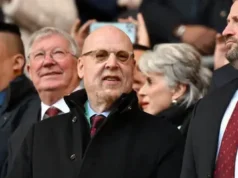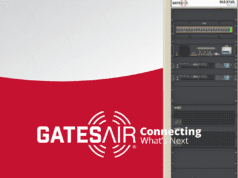The shortage of frequencies necessary for live production that looks to be coming after the spectrum repack has TV engineers very worried, says Louis Libin of Broad Comm, a broadcast spectrum consultancy, and executive director of the Advanced Television Broadcasting Alliance. He says stopgap measures, such as temporarily migrating to other bands, modifying production techniques and developing new wireless technologies, can help, but the real solution will come from an FCC that recognizes the value of over-the-air TV broadcasting.
By Phil Kurz
TVNewsCheck, November 12, 2015 10:14 AM EST
Television sports production in the United States may soon experience changes that in essence transport it back in time and technology rather than advancing the state of the art. That would be the result if government regulators fail to take seriously the shortage of frequencies that will result from repacking the TV band and allowing unlicensed white space devices to operate on vacant channels.
That’s the rather dire warning from Louis Libin, founder and president of Broad Comm, a broadcast spectrum consultancy, and executive director of the Advanced Television Broadcasting Alliance, makes in this interview with TVNewsCheck Tech Editor Phil Kurz.
While Libin, who has spent more than 20 years coordinating frequency use for live sports, entertainment and political convention production, says stopgap measures, such as temporarily migrating to other bands, modifying production techniques and developing new wireless technologies, can help, the real solution will come from an FCC that recognizes the value of over-the-air TV broadcasting.
For the short term, however, Libin says sports producers will have to make due with these sorts of solutions because the FCC, as currently constituted, is intentionally using a shortage of TV spectrum as a wedge to sow disharmony between broadcasters and wireless mic users like those in the sports production community to weaken their respective positions and advance its spectrum policy.
An edited transcript:
Wireless mics, intercoms and other gear that transmit on unused UHF TV channels are essential to modern sports production. What are your thoughts about the TV spectrum repack and the introduction of unlicensed white space devices as relates to sports production?
I am not going out on a limb here. The FCC has a strategy for broadcasting generally. Their strategy is, broadcasting doesn’t need spectrum.
They don’t need 700 MHz. Got rid of that. They don’t need 600 MHz, getting rid of that; and they don’t really want us in the 500 MHz, especially under [FCC Chairman Tom] Wheeler.
He’s pretty transparent. Broadcasters shouldn’t be in spectrum. The FCC has a lot of different techniques they are using to get broadcasters out of spectrum.
What we’re calling the white space proceeding, or really the vacant channel proceeding, is a very serious wedge issue for the broadcasters.
What do you mean by a “wedge issue?”
By a wedge issue, I mean the FCC has an ax and a wedge, and they are chopping away to divide broadcasters.
These are very complicated issues, the vacant channel issues. It’s almost as though the wireless mics and the other broadcast auxiliary devices that work in 500 MHz and 600 MHz — soon to just be 500 MHz — are eclipsed by the bigger issues of the vacant channels.
The commission thought really long and hard about how to divide the broadcast community.
We already have a problem in many, many markets just squeezing out enough channels to do the broadcast [of a live sporting event]. That problem simply will be compounded. If you are now going to squeeze everything into a smaller TV band, where are these wireless mics and broadcast auxiliary services going to go?
Broadcasters are commenting that vacant channels are in danger. They are concerned about their main channel, and everything else is minor.
Then we have [wireless mic] vendors and others who do sports production saying, “Be sure you reserve us a vacant channel.”
The ones who really understand how sports productions are being done wirelessly today are getting extremely nervous because the FCC has proposed no solution.
So, you see the FCC pitting OTA broadcasters against live sports and entertainment producers and white space proponents against them both?
I think the commission is just hoping that the noise level of all the folks who use the broadcast auxiliary service is low enough that it won’t matter.
The FCC, of course, is winning. They are the ones who set the rules. They are just winning by attrition.
And they never really listen or provide any help or solutions to the broadcasters.
This [situation] is creating enemies among all those who are not enemies. But everyone is just grasping for the few straws that are left.
Can you quantify the spectrum demands for different sorts of sports productions?
You can divide these types of events into four categories.
- The small event could be a state fair, a basketball game or a local concert. It’s an event where we use wireless mics and sometimes wireless intercoms. That’s all.
- A medium-size event today could be a high school or college football game where there is a wireless intercom and as many as 40 channels of wireless in use.
- Then you have a heavy user. For example, at a college or NFL football game, you could have up to 60 channels of wireless in use. And there may be ENG crews that come around to cover the event. They need to be accommodated. That number could be anywhere from zero to 100. Now you are talking about 140 to 160 channels of spectrum. That’s tough to accommodate.
- Then you go to the Super Bowl, and that’s really a different story. As with political conventions, every bit of spectrum is gobbled up — not in a bad way. But it’s used and reused as much as possible. There’s no end to the amount of spectrum that gets used -even low-quality spectrum is used because high-quality spectrum, that which is free and clear, is fully taken over.
When 600 MHz is gone, if the FCC gets its wish, you can take a Super Bowl, or a heavy football use mentioned as the third category and those two types of events will surely suffer right away.
At that point, there will need to be solutions found, or production will have to change. Obviously, it won’t be for the better.
Things are going to change. That is the issue in a nutshell.
Is there a technological way out of this predicament? Maybe leveraging Wi-Fi or mobile?
Yes, to every one of those. But none is a true, transparent, seamless solution.
Engineers are engineers, and they solve problems. So every scenario you’ve brought up is being studied, and even more of them [are being examined]. But they are all sort of Band-Aids and piecemeal. They all have operational constraints.
Wi-Fi is a very good example. That’s nice. That’s a free, unlicensed band. The problem, of course, is saturation.
Trunking systems, wow, those are nice. But you can’t use them because you have the delays.
Maybe we multiplex a couple of mobile phones together? We can, but the bandwidth constraints won’t give us the same quality we are used to for wireless mics that are part of the contribution network.
There’s the bottom line. If you don’t have the bandwidth in the contribution network, you can’t fix it any place else. Wireless mics need to be pristine, and they need to be protected.
What about moving some of this wireless demand for sports productions to other bands?
One example is the 1.4 GHz band. It’s a band that is licensed to AFTRCC [the Aerospace and Flight Test Radio Coordinating Council], which is used as an aircraft test frequency.
To use it, broadcasters have to apply for an STA [special temporary authority from the FCC] every time they use it, and it’s been identified as a band that we can potentially share. But the rules haven’t been set yet.
Another example is 2.2 GHz, which is used by government frequency users, although it’s not widely used.
To use that band, broadcasters have to get permission from the NTIA [the National Telecommunications and Information Administration] via the FCC.
What they’ve found is the NTIA is more and more reluctant to allow that use, so they turn down the STA requests.
Everybody is now going into their shell and protecting what they have. The normal users of the 2.2 Gig band are now saying: “Wait a second. We don’t want to set a precedent, and we don’t want to allow too many STAs because eventually they may want to share and take away our band.”













